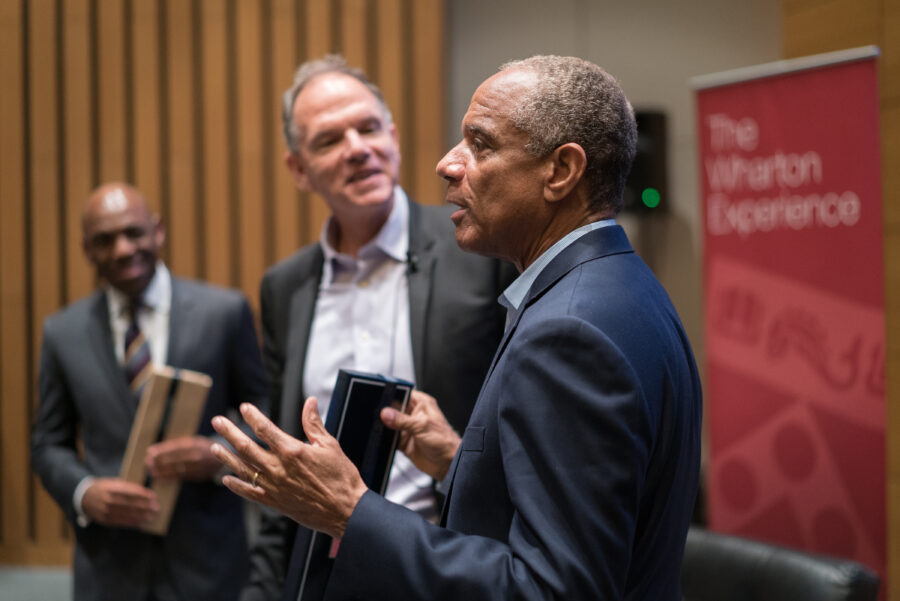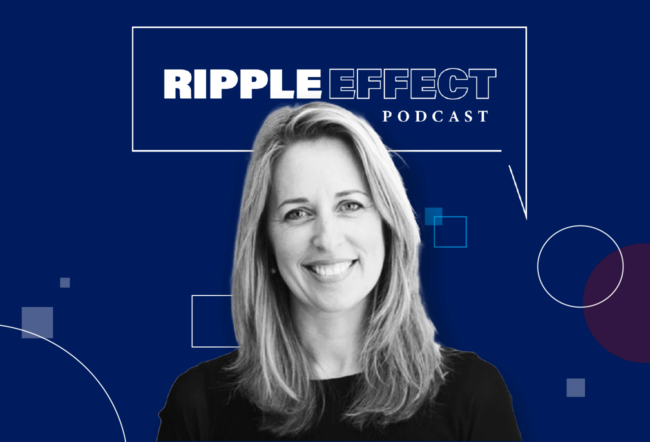In this opinion piece, Wharton Dean Geoffrey Garrett writes about critical advice he has received from other leaders – including former Dow Chemical CEO Andrew Liveris, University of Pennsylvania President Amy Gutmann, American Express CEO Kenneth Chenault, former Chancellor of UCLA Albert Carnesale and Vanguard CEO William McNabb. “The five lessons I have sketched here have had a massive impact on how I try to lead every day,” he writes. “I hope they will do the same for you.”
I was worried when asked to open the recent Wharton CEO Academy in New York before Thanksgiving. What could I (dean of a business school reporting to the university provost) tell a roomful of CEOs (hired and fire-able by fiduciary boards of directors) about leading large companies? After pondering this for a while, I realized I should focus on lessons learned from leaders who have shown and shared with me how they do it.
So here are five great leadership lessons I’ve learned from five wonderful leaders (three big business CEOs, two big university presidents), which I try to remember and use every day beginning with the most macro, and ending with the most personal.
Andrew Liveris, former CEO of Dow Chemical
CEOs must be creative and charismatic enough to develop and communicate a vision, smart and broad enough to formulate a good strategy, and be empathetic enough to help people implement it.
When Andrew first told me this, my initial reaction was that it’s easy — just three things: vision, strategy, implementation. But the more I thought about it, the harder the challenge became. Not everyone naturally does the “vision thing.” Those who paint the biggest picture often find the discipline of developing a detailed strategy tedious. And people who are good at working their way precisely and causally through strategy tend to be less comfortable walking the corridors, connecting with and motivating people.
“Easy to say, hard to do: That is the only possible conclusion regarding the trifecta of vision, strategy and implementation.”
Easy to say, hard to do: That is the only possible conclusion regarding the trifecta of vision, strategy and implementation. Yet it is clear that the modern CEO is expected to excel at all three. Maybe that is why good CEOs are highly compensated, but also why they’re harder to find and keep — and why the tenure of an average CEO is shorter than you’d think.
Amy Gutmann: President of the University of Pennsylvania
CEOs don’t need to formulate “Strategic Plans,” but they do need to develop strategic plans.
Soon after I became Wharton’s dean I realized one of my decanal colleagues, who was a year further into the job, had just completed a year-long Strategic Plan — engaging lots of stakeholders in lots of meetings, drawing commonalities among different parts of his portfolio, and generating shared goals. I asked Amy whether she thought I should do one. Her answer — based on her Penn Compact from the mid 2000s that has now evolved into the Penn Compact 2020 — was “not necessarily.”
Amy told me that there are two critical things to get from strategic planning: engaging and bringing together disparate stakeholders, and developing shared goals regarding top priorities. Sometimes it might be important to make this a formal process. But that tends to get complex and time consuming. The process often becomes an end in itself. The final Strategic Plan can be littered with unobjectionable platitudes. Better to do without the capital S and the capital P — but only if you can bring people together around shared priorities without a formal process. Amy has certainly done that at Penn, and I hope I’m doing it at Wharton.
Ken Chenault, CEO of American Express
Meetings are really important for CEOs. The more people from the more diverse perspectives from more parts of the organization you listen to and learn from, the better decisions you will make, and the more people will help you with executing them.
I had the chance to sit down and chat with Ken before he did a Dean’s Lecture at Wharton last year. What an experience! Ken, who recently announced that he’s retiring after a 35-year career, has an incredible personal biography. What he has done at Amex, not only with technology but also with diversity, is amazing. But what was most clear to me was Ken’s commitment to his people, to communicating with them plainly, to earning their trust, to generating trust among them all, to delivering great outcomes.
One key way to do this? The humble meeting, the bane of every executive’s life and the butt of so much corporate disdain about managerialism. Ken turned this concept on its head. The goal for every leader is to make every meeting matter, from one-on-one to pretty large groups, by framing problems, listening actively and synthesizing the thoughts in the room.
CEOs know that the final decision is inevitably theirs — as Harry Truman’s famous desk weight said, “The buck stops here.” But this is what Ken told me about the importance of meetings: You will perform much better as CEO if you can create an environment where there is real diversity of experience and perspective in the room and everyone has the confidence to speak up, share their views and learn from each other.
“Days full of endless meetings are a fact of life for anyone in any management position in a large organization. But you can turn them into your secret weapon for success.”
You will make better decisions the more widely you genuinely consult. And the more people you give a voice in making decisions, the more they will help you implement them. Days full of endless meetings are a fact of life for anyone in any management position in a large organization. But you can turn them into your secret weapon for success.
Al Carnesale, former Chancellor of UCLA
When you’re CEO, you’re often seen as the smartest person in the room, and others will be looking to you to show it. You must resist that temptation. It is the only way to bring out the fullest collective intelligence of any room.
Al Carnesale is one of the most intelligent people I have known. I don’t think I am slow, but he was always several steps ahead of me in thinking through any issue — even when it was my issue and one he hadn’t thought about nearly as much as I had. Nonetheless, Al was acutely aware that being seen as the smartest person in the room when you are the group leader can badly damage group dynamics. When you are the leader, anything you say — even if it’s only thinking out loud or consciously designed to stimulate conversation — will be taken as gospel and given far more power than you intended.
We can only hope that people who make it to the top make it for good reasons. “Smarts” is only one of those good reasons, but it is likely to be one. Al understood that this could be very helpful, because it is great for an organization if the CEO has lots of bandwidth. But it could also stifle creativity, conversation and collective intelligence. That is why his “try not to show it” admonition was so important.
Bill McNabb, CEO of Vanguard
CEOs often tell themselves and each other to remember it’s a marathon, not a sprint. They are wrong. Being CEO is a series of sprints, not a marathon. That makes recovery between sprints essential. No matter how you do it, recharging is essential not only to personal well-being but also to peak job performance.
Bill McNabb and I share a love of competitive sports, including some Australian athletes I was surprised to know are his heroes: “the oar-some foursome” in rowing, and Herb Elliot in middle distance running. Soon after I became Wharton dean, he asked me how things were going. I said something like, “I try to remember it is a marathon, not a sprint.”
“Big jobs can eat you alive. You need to give them your all when you are working. But it is equally important that you recover from the latest sprint.”
That is when he corrected me. Of course you can’t be too impatient as a CEO. Of course you should think about long-term goals rather than short-term wins. But Bill was making a different point.
Big jobs can eat you alive. You need to give them your all when you are working. But it is equally important that you recover from the latest sprint — a busy day, week, month. When you can switch off, recharge, recover, you can embark on the next sprint and perform at your highest level.
Recharging is a personal matter. We all do it differently. How you recover doesn’t matter. That you do it is essential if you want to succeed, personally and professionally, in jobs with lots of expectations and lots of responsibilities.
I’m not sure how well I framed and catalyzed the conversation at our last CEO Academy. But going through the process has reminded me how much I’ve learned from the great leaders I’ve had the pleasure and privilege to know. The five lessons I have sketched here have had a massive impact on how I try to lead every day. I hope they will do the same for you.
Learn more about Wharton’s CEO Academy. This article originally appeared on LinkedIn.
Image: Kenneth Chenault, CEO of American Express, speaking at the Dean’s Tarnopol Lecture Series at Wharton.
General Management Program
Enhance your leadership skills and advance your business acumen with a focused curriculum that covers finance, leadership, marketing and strategy. Earn Wharton alumni status upon completion of six open-enrollment programs. Learn more.



